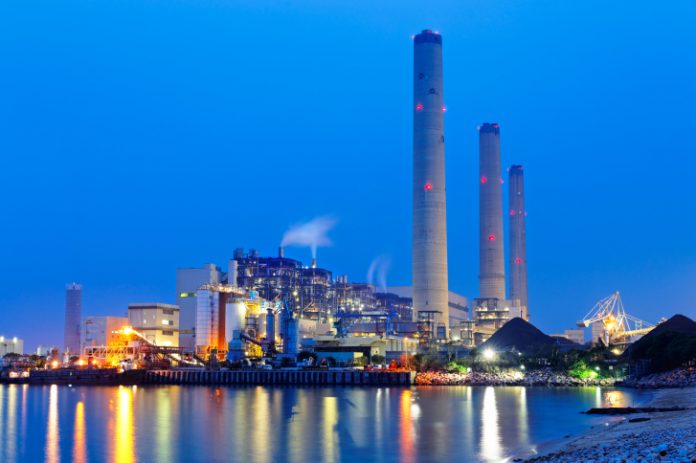The U.S. Environmental Protection Agency (EPA) announced new regulations on April 25 that would force coal-fired power plants to reduce or capture 90 percent of their carbon dioxide emissions by 2039, one year earlier than in the rule originally proposed in May 2023.
Other newly announced coal regulations include a final rule “strengthening and updating the Mercury and Air Toxics Standards (MATS) for coal-fired power plants, tightening the emissions standard for toxic metals by 67 percent, finalizing a 70 percent reduction in the emissions standard for mercury from existing lignite-fired sources,” and another rule to “reduce pollutants discharged through wastewater from coal-fired power plants by more than 660 million pounds per year.” The EPA also issued an additional rule to require the safe management of coal ash in locations not previously covered by federal regulations.
“Today, EPA is proud to make good on the Biden-Harris administration’s vision to tackle climate change and to protect all communities from pollution in our air, water, and in our neighborhoods,” said EPA Administrator Michael S. Regan. “By developing these standards in a clear, transparent, inclusive manner, EPA is cutting pollution while ensuring that power companies can make smart investments and continue to deliver reliable electricity for all Americans.”
EPA estimates its new regulations will reduce carbon dioxide emissions by 1.38 billion metric tons by 2047 and create $370 billion in “climate and public health net benefits” over the next twenty years.
Coal in a Regulatory Decline
Partially due to increasingly stringent regulations, electricity generation from coal has fallen from 52 percent of the nation’s total output in the 1990s to just 16.2 percent in 2023. Critics of the new regulations, including Jason Isaac, CEO of the American Energy Institute, argue that EPA’s new rules would make it impossible to open new coal plants and will effectively force those already online to shut down operations.
“These rules are a direct attack on an important and necessary source of American energy—one of our most affordable, reliable resources, and one that is essential here and growing in use around the world,” said Isaac. “The ignorance of this administration is negligent at best, criminal at worst, relegating the least among us to more expensive energy, or even none at all, as millions of Americans are finding out by having their electricity disconnected.
“On one hand they push to electrify everything and then with the other leave us with unreliable electricity,” Isaac said. “The Biden administration is hell bent on destroying coal and reaching new levels of recklessness.”
‘De Facto Ban’ on Coal
The new regulations almost assuredly will face legal challenges from the coal industry and others, says Steve Milloy, founder of JunkScience.com.
“Another unconstitutional EPA rule from the Biden regime that will be DOA at [the Supreme Court] but not until much harm has been caused,” said Milloy. “Congress has not authorized EPA to issue regulations that operate as a de facto ban on coal plants, yet that’s what this regulation amounts to because it mandates emissions control technology (i.e., carbon capture and sequestration) which does not, and will never, exist for coal plants.”
EPA, by contrast, says carbon capture and sequestration (CCS) is the “best system of emission reduction for the longest-running existing coal units” and a “cost-reasonable emission control technology that can be applied directly to power plants and can reduce 90 percent of carbon dioxide emissions from the plants.”
“The requirement for imaginary technology violates Clean Air Act notions of only requiring the best available and adequately tested technology,” Milloy said. “The de facto ban violates the 2022 [Supreme Court] decision in West Virginia v. EPA, which established the major questions doctrine, under which agencies cannot undertake significant new actions, like banning coal plants, without authorization from Congress.”
Natural Gas Targeted, Too
Coal plants were not the only target of new EPA regulations, as natural gas power plants are also now required to eliminate or capture 90 percent of their carbon dioxide emissions by 2032, three years earlier than called for when the draft rule was originally proposed in 2023.
The EPA is acting as if it has absolute power unconstrained by the law and prior court rulings, Darren Bakst, director of the Competitive Enterprise Institute’s Center on Energy & Environment, says in a press release.
“The [EPA] absurdly thinks its authority to regulate means it has the authority to shut down businesses,” said Bakst. “Establishing new regulations for power plants does not mean the agency can effectively force them out of business.
“This is Clean Power Plan Part II, but like with many sequels, it is worse,” Bakst said.
Tim Benson (tbenson@heartland.org) is a senior policy analyst with Heartland Impact.
For more on the Biden administrations power regulations, click here.


























